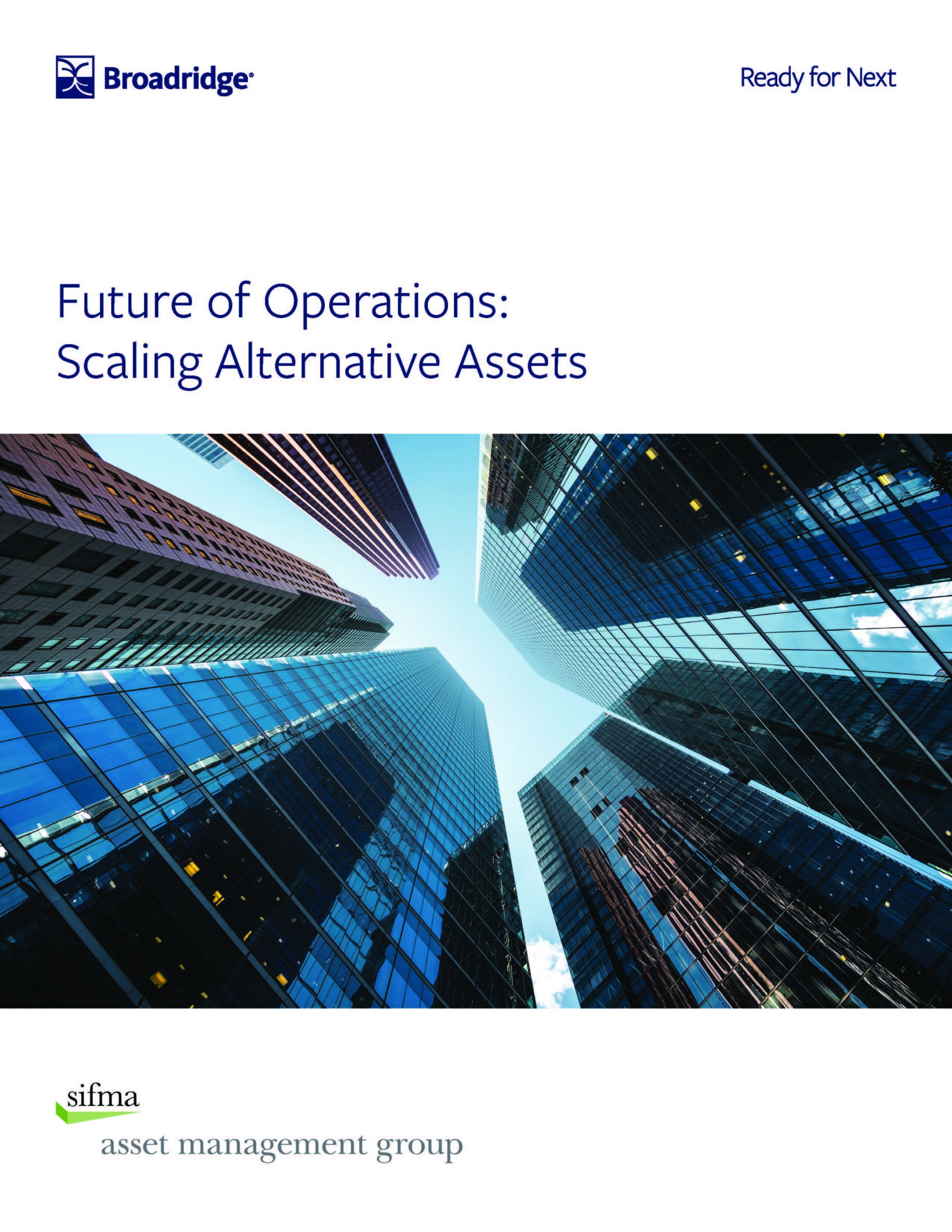Future of Operations: Scaling Alternative Assets
There is no universal definition of alternative asset classes. Although there is some broad agreement that assets like private equity and hedge funds belong in the alternatives category, there is no comprehensive taxonomy of assets accepted by the industry. An asset class like private debt might fall into the alternatives bucket at one firm and the fixed-income sleeve at another.
Hear from leading buy-side executives on the development of new models, best practices and solutions that help to simplify alternative asset operational functions while reducing cost, risks and resource requirements.

Excerpt
Introduction
More than 30 years ago, Yale University’s endowment fund began to move investment assets out of marketable securities and into what were then little-known asset classes that collectively became known as “alternatives.” Since then, other institutional investors—and, more recently, growing numbers of retail investors as well—have sought to replicate the success of that model by allocating steadily increasing amounts of assets to alternative asset classes. That shift accelerated dramatically in the decade since the Global Financial Crisis as investors recognized the diversification and other benefits that alternatives can provide, and sought out new, uncorrelated sources of yield during a period of historically low interest rates.
Just 15 years ago, alternative asset classes made up only 6% of the global investable market. That share is expected to grow to 24% by 2025, according to the Chartered Alternative Investment Analyst Association.1
The rapid growth of alternatives is putting buy-side operations teams under stress. In the world of alternative investments, a lack of public, standardized data combines with complex and heterogenous deal structures to make operations a challenge. The unique characteristics of alternative assets create a heavy load of manual and bespoke work demands. Those demands start with setting up the investments in asset managers’ systems and extend into reconciliation, reporting, payments and a host of other essential operational functions. As Ron Withelder, Managing Director and Operations Manager at J.P. Morgan Asset Management explains, “For alternatives, you need everything you need for public assets, but at a much more complex level.”
Complicating the picture even further is the fact that the operational demands vary, both across alternative asset classes— say from private equity and hedge funds to real assets and private credit—and within individual asset classes, with many deals and funds containing customized terms and structures created to meet the needs of participants. This variation makes it difficult, and sometimes impossible, to centralize and streamline operational processes. For that reason, many operational functions are still conducted manually—a situation that increases costs and introduces a level of human risk that is not present in public liquid assets.
Investors and other market participants are working hard to create efficiencies and alleviate the pressure on operations teams. They are standardizing operational functions where they can, and applying technology to automate processes to the fullest extent possible. However, to support allocations at current scale, the industry will have to go much farther. It will need to develop new models and solutions that simplify operational functions, reducing costs and resource requirements.
But as alternatives continue to expand, the industry will have to accept that change will come only incrementally. “When it comes to alternative operations, there is no silver bullet,” says John Partenza, Vice President of Product Management for Broadridge.